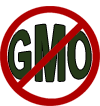Annan Rules Out Use of GMOs in the War on Hunger in Africa
By Allan Odhiambo
Business Daily (Kenya)
July 17, 2007
In what is bound to stir controversy in agriculture and scientific circles, former UN secretary general Kofi Annan has ruled out the use of Genetically Modified Foods (GMOs) in the battle against food insecurity and poverty in Africa.
"We in the alliance will not incorporate GMOs in our programmes. We shall work with farmers using traditional seeds known to them," he said. Mr Annan said poor pricing of commodities, and not type of seeds, keeps African growers away from their farmlands despite spiralling food insecurity and poverty on the continent.
"We need to get the right seeds into their hands by strengthening research partnerships with local universities and other institutions," he said. Mr Annan said insufficient infrastructure such as roads, poor storage facilities and weak market structures were to blame for Africa's continued dependence on food aid.
"Millions of Africans are being fed through aid and this is not sustainable. We have the means to make Africa self sustainable," he said. Mr Annan, who chairs the Alliance for a Green Revolution in Africa (Agra), said infrastructure development will top the organisation's agenda for the next five years.
"We need proper market systems, an infrastructure of roads and storage facilities because failure by farmers to access them acts as a demoralising factor," he said. Agra was established last year with an initial $150 million grant from the Bill & Melinda Gates and Rockefeller foundations.
It seeks to help millions of small-scale farmers and their families get out of poverty and hunger through sustainable growth in farm productivity and incomes. Mr Annan said food production in Africa could be doubled in the next decade with improved seeds and increased access to inputs such as fertilisers and pesticides.
The Alliance was formed in response to recent calls by African leaders to chart a new path for prosperity by spurring the continent's agricultural development and also seeks to help reverse decades of relative neglect in funding for agricultural development for Africa.
It seeks to firm the vision laid out in the African Union's Comprehensive Africa Agriculture Development Programme (CAADP), which seeks a 6 percent annual growth in food production by 2015 through increased usage of new technology and inputs such as fertiliser.
CAADP was established by the African Union's New Partnership for Africa's Development (AU/NEPAD) in July 2003 with special focus on four pillars including, extending area under sustainable land management and reliable water control systems, improving rural infrastructure and trade-related capacities for market access, increasing food supply, reducing hunger and improving response to food emergency.

